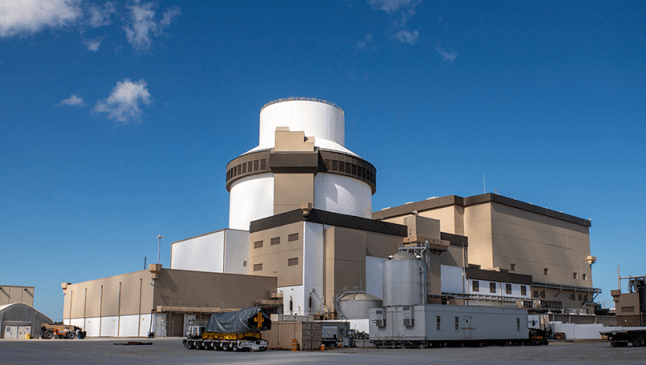
2 Feb 2024
Tripling Nuclear Energy May Not Be Enough
Tripling current output of nuclear power, as recommended in a declaration at COP28 in Dubai, intuitively sounds like a worthy and aggressive goal. However, if there's an expectation that the global economy will continue to grow between now and 2050, it becomes apparent that humanity is striving to reach an ever-moving goal.
The global economy is currently running at about $100 trillion annually. If global GDP growth averages a modest 2.5% annually then the economy will be about $185 trillion in 2050. (Projecting current global population growth of 0.9% annually with the average of GDP growth per capita since 1960 yields this 2.5% projection.)
Assuming no increase in energy-use efficiency, the projection then assumes 2.5% annual growth in world electricity consumption. This means consumption will almost double from 30,000TWh today to 56,000TWh by 2050.
Nuclear power generates 10% of the current 30,0000TWh consumed by the world annually. Tripling that 8,400TWh means it will provide only 15% of the 2050 total.
Coal provides 36% of today's energy (half of this coal is burned in China to produce 62% of that country's electricity), 23% of the world's electricity comes from natural gas, 15% from hydroelectric power, 6% from solar, 4% from wind, and 6% from other sustainable resources.
It Just Gets More Difficult
Here's where things get very difficult. Assume optimistically that coal usage drops to zero by 2050 and natural gas to 10% of total electricity production (this would represent an overall drop of only 13% over the 26 years).
If nuclear energy has tripled, to provide 15% of 2050 consumption, and natural gas supplies another 10%, that leaves 75% of the load to renewable energy – or 42,000TwH, about 40% more than the world's total electricity consumption today.
So, the combined use of solar, wind, hydroelectric, geothermal, biomass – and emerging ideas of hydrogen – would have to rise 500% between now and 2050, to close that gap. The enormity of this challenge suddenly appears terrifying. The cost would be at least $8 trillion, but the physical and political challenges of building the thousands of required new hydro plants, solar fields and wind farms are greater than the financial challenge.
For example, one megawatt of solar power generation requires 6 to 8 acres. Creating even 1,000 gigawatts (1 million megawatts) requires 6 to 8 million acres (on the order of 9,000 to 13,000 square miles or 24,000 to 32,000 square kilometers). Current wind-turbine towers produce a megawatt or so – so imagine one million new towers in the world to produce that 1,000 gigawatts. And we're looking for 3,800 gigawatts.
How Much?
The questions are therefore, how much renewable and sustainable (ie, nuclear) energy can, should, and will be built? Is the COP28 nuclear declaration too timid? What is a realistic estimated range for emissions levels in 2050? Will electricity-grid development skew toward developing nations in the next 26 years, or will the world economic picture then look very similar to the picture today?
And where are humans really going with emissions reduction and the consequent, expected climate-change abatement?
Follow us on social media:


.d57b427b.png&w=3840&q=75)

















